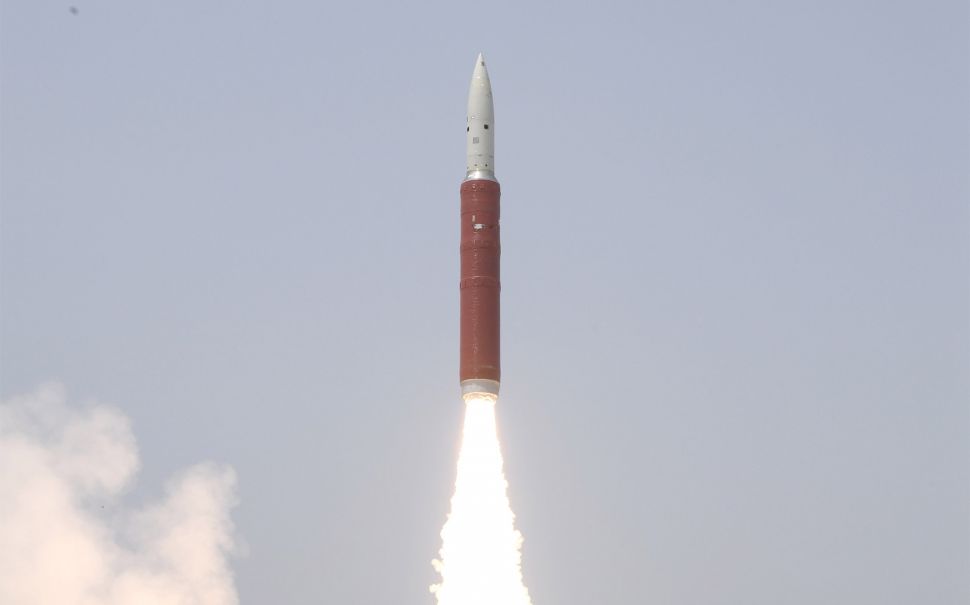
Indian anti-satellite (ASAT) launch
WASHINGTON: For a while there yesterday, it felt a bit like 2007, when China destroyed its first satellite and created a large field of space debris, sparking international condemnation.
But as details began to trickle out, it begins to look as if India’s destruction of one of its satellites was done with some care and shouldn’t cause a great deal of consternation among those countries and companies whose satellites occupy a Low Earth Orbit.
Of course, those whose birds fly the lowest and are most likely to suffer disruption — some makers of smaller satellites who launch lots of birds into lower orbits — were not happy.
Planet’s response to India’s testing of an anti-satellite missile. pic.twitter.com/bZuuIYtCFB
— Planet (@planetlabs) March 27, 2019
The Pentagon issued a terse statement that appeared to confirm India at least made the attempt to destroy what experts at AGI estimate was Microsat-R, apparently a military earth observation satellite: “Department of Defense is aware of the Indian ASAT launch. U.S. Strategic Command’s Joint Force space Component Command (JFSCC) is actively tracking and monitoring the situation.” I contacted Air Force Space Command and Strategic Command for more information and was referred to the Office of Secretary of Defense for information, indicating how sensitive this is. India is, of course, now one of America’s most important allies. Just say China.
So far, however, we have no independent confirmation India successfully destroyed a satellite. The closest we’ve gotten is a high confidence estimate by AGI vice president for engineering Tom Johnson that the Indian rocket launch was headed for Microsat-R. They relied on time of launch, the NOTAM issued by India, the time of flight (three minutes) and distance flown, about 300 kilometers. Johnson said they also made the reasonable assumption that India would destroy an Indian satellite.

An intriguing graphic put up on an Indian website. https://blog.forumias.com/7-pm-mission-shakti-anti-satellite-missile-test-28-march-2019/
One thing that interested me was that the satellite AGI thinks was struck was only launched Jan. 24 this year. Had it failed? Did India launch it with the intent of destroying it or was it a target of opportunity? No idea yet.
What happens next? The Air Force Space Command folks who build what’s called the space catalog will update it. That’s when we’ll learn if the estimated target has disappeared or not. But, Johnson notes, “We won’t see those updates for some time.”
Johnson did not seem alarmed by the amount of space debris probably caused by the destruction of the 740 kilogram satellite. He noted the interception occurred at a “relatively low altitude” of 280 kilometers. “A lot of the debris will reenter pretty quickly — in days to weeks,” he said, “We think the relative velocity of the impact was fairly low, as these things go. On the order of 9 kilometers a second, compared to the Chinese. That was 15.8 kilometers per second and it was much higher (up).”
India’s Ministry of External Affairs issued a FAQ on the test, which included this statement: “The test was done in the lower atmosphere to ensure that there is no space debris. Whatever debris that is generated will decay and fall back onto the earth within weeks.”
Theresa Hitchens, a space expert at the University of Maryland, said in an email that, India has “been signaling this for at least a decade. It’s not a surprise, although the US had been pressing them to restrain themselves. But why should they, when the big three powers are ramping up a space arms race and have stopped being serious about working on mutual restraint? India is trying to prove itself in space and vis-a-vis China. Modi is up for re-election.”
But Johnson did express concern that another country has joined the ASAT club. When the Chinese made their spectacularly messy strike in 2007, it created 3,042 items in the space catalog. Johnson said only 616 have reentered the atmosphere. Of course, there may be many more smaller objects, since the space catalog officially tracks objects 10 cm and larger.
“If everybody tries to prove they are members of this club, this could get messy quickly,” he said.
In a ‘world first,’ DARPA project demonstrates AI dogfighting in real jet
“The potential for machine learning in aviation, whether military or civil, is enormous,” said Air Force Col. James Valpiani. “And these fundamental questions of how do we do it, how do we do it safely, how do we train them, are the questions that we are trying to get after.”


























